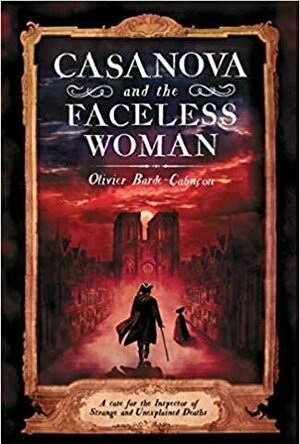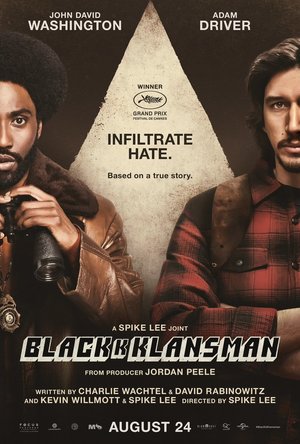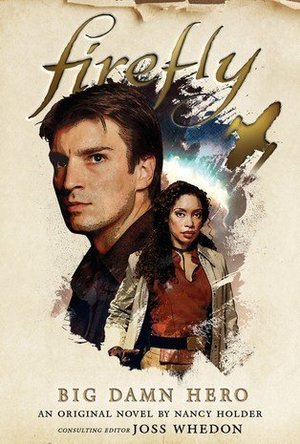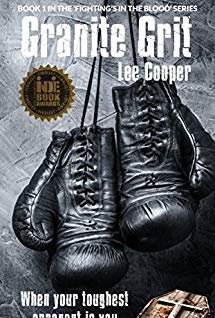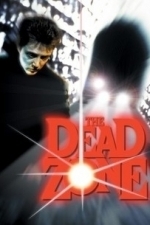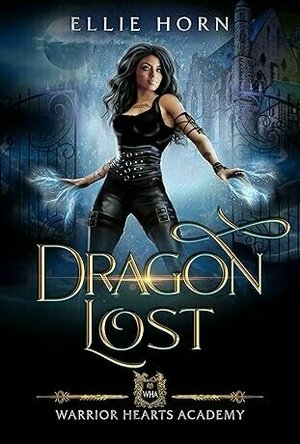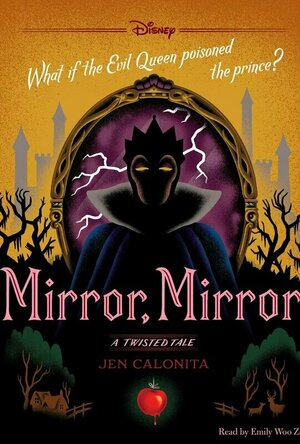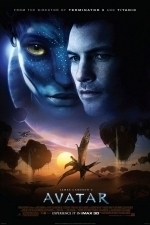Search
Search results
The story is told from multiple perspectives, mainly by Volnay – The Inspector of strange and unexpected death, and Casanova – the seducer of everyone with a vagina. The main character I think is Volnay, and most of the time he shares his findings, uncovered with the help of his companion, the Monk. Casanova is just there, and his story was not very interesting to me, he was more of an obstacle rather than an intriguing participant. The characters are very sophisticated, refined, and most of the time very rich. The atmosphere in this book is quite grand, pompous and fancy, however, there are parts of filthiness and prostitution from time to time as well. My favourite character in this book has to be the Monk, he is the smartest and most intriguing of all of them, and Volnay would be nothing without him.
This book was quite a slow burner for me. First of all, there is not much progress happening towards the murders, and secondly, it is a very political book. There is a lot of scientific talks about alchemy, potions and other science-related things, that sound interesting, but at the same time doesn’t make sense to me at all. :/ The topics discussed in this book were paedophilia (the king was a paedophile), prostitution, scientific inventions, alchemy, French political affairs, etc. There were not many things happening in this book, and I missed the twists and turns to speed up this book.
The writing style of this book is very rich and sophisticated, the author has to be a true intellectual, who is into philosophy and science. It is a translation from French, that’s why it is filled with French expressions and place names. The chapters were too long for my liking and felt quite draggy sometimes. The ending was quite interesting but didn’t leave me fully satisfied. So, to conclude, it is a very complex novel, filled with refined characters, and very layered and political plot. This book is very beautifully written and I believe that the author is very gifted, to be able to write a book like this, but the reader has to be an intellectual as well, to appreciate and enjoy it. So if you are into 18th century France, and enjoy books about politics and science, this historical thriller will be for you.
This book was quite a slow burner for me. First of all, there is not much progress happening towards the murders, and secondly, it is a very political book. There is a lot of scientific talks about alchemy, potions and other science-related things, that sound interesting, but at the same time doesn’t make sense to me at all. :/ The topics discussed in this book were paedophilia (the king was a paedophile), prostitution, scientific inventions, alchemy, French political affairs, etc. There were not many things happening in this book, and I missed the twists and turns to speed up this book.
The writing style of this book is very rich and sophisticated, the author has to be a true intellectual, who is into philosophy and science. It is a translation from French, that’s why it is filled with French expressions and place names. The chapters were too long for my liking and felt quite draggy sometimes. The ending was quite interesting but didn’t leave me fully satisfied. So, to conclude, it is a very complex novel, filled with refined characters, and very layered and political plot. This book is very beautifully written and I believe that the author is very gifted, to be able to write a book like this, but the reader has to be an intellectual as well, to appreciate and enjoy it. So if you are into 18th century France, and enjoy books about politics and science, this historical thriller will be for you.
LeftSideCut (3776 KP) rated BlacKkKlansman (2018) in Movies
Sep 9, 2020
BlacKkKlansman just ticked all the right boxes for me. Spike Lee has created a piece that is moving, hilarious, horrific, poignant and something truly important.
John David Washington and Adam Driver are a winning leading pair, portraying Ron Stallworth and Flip Zimmerman respectively, two police officers from Colorado Springs who manage to infiltrate a local chapter of the Ku Klux Klan, in an attempt to foil a potentially fatal and racially charged attack, and it's all based on a quite incredible true story.
Washington and Driver are both fantastic, providing this movie with most of it's heart, humour and emotion.
Topher Grace is great as well, as David Duke, a top brass member of the KKK. He's so smarmy, and easy to dislike, much like his real life counter part. This applies to all the racist pieces of shit in this story actualy. The characters are all horrible, but the cast bring them to life in a disturbingly believable way.
The screenplay is nothing but tight from start to finish. It's very funny in places, and heart wrenching in others. A particular highlight is a speech spoken early on by black rights speaker Kwame Ture. It's a lengthy monologue that is so damn powerful. There are multiple scenes that strike hard throughout the runtime - another standout moment is the truly uncomfortable visuals of Ron Stallworth looking on in quiet despair as KKK members cheer loudly whilst watching The Birth of a Nation. Humanity can be extremely ugly, and although BlacKkKlansman veers towards comedy at times, Lee is sure to never stray too far from that fact.
Some of the criticism I've read of this movie are along the lines of "it has an agenda" and "it's being forced down the audiences throat". Well, yeah if course it has an agenda. It's dealing with a topic that shouldn't even exist in the first place, but it's certainly not being force fed. No one is forcing anybody to watch it, but I highly recommend that EVERYONE does watch it.
The inclusion of real life footage of protests in 2017 is a strong statement, it's a director publicly taking a stand for something he believes in. In 2020, these topics feel more important than ever.
BlacKkKlansman is an incredible movie, and nothing can change my mind about that.
John David Washington and Adam Driver are a winning leading pair, portraying Ron Stallworth and Flip Zimmerman respectively, two police officers from Colorado Springs who manage to infiltrate a local chapter of the Ku Klux Klan, in an attempt to foil a potentially fatal and racially charged attack, and it's all based on a quite incredible true story.
Washington and Driver are both fantastic, providing this movie with most of it's heart, humour and emotion.
Topher Grace is great as well, as David Duke, a top brass member of the KKK. He's so smarmy, and easy to dislike, much like his real life counter part. This applies to all the racist pieces of shit in this story actualy. The characters are all horrible, but the cast bring them to life in a disturbingly believable way.
The screenplay is nothing but tight from start to finish. It's very funny in places, and heart wrenching in others. A particular highlight is a speech spoken early on by black rights speaker Kwame Ture. It's a lengthy monologue that is so damn powerful. There are multiple scenes that strike hard throughout the runtime - another standout moment is the truly uncomfortable visuals of Ron Stallworth looking on in quiet despair as KKK members cheer loudly whilst watching The Birth of a Nation. Humanity can be extremely ugly, and although BlacKkKlansman veers towards comedy at times, Lee is sure to never stray too far from that fact.
Some of the criticism I've read of this movie are along the lines of "it has an agenda" and "it's being forced down the audiences throat". Well, yeah if course it has an agenda. It's dealing with a topic that shouldn't even exist in the first place, but it's certainly not being force fed. No one is forcing anybody to watch it, but I highly recommend that EVERYONE does watch it.
The inclusion of real life footage of protests in 2017 is a strong statement, it's a director publicly taking a stand for something he believes in. In 2020, these topics feel more important than ever.
BlacKkKlansman is an incredible movie, and nothing can change my mind about that.
Joe Goodhart (27 KP) rated Firefly: Big Damn Hero (Firefly #1) in Books
Nov 30, 2020
WOW! No, really, <b>WOW!</b> That was gorram incredible!
It's been ages since I read any fan fiction, as so much of it, at the end of the day, was just glorified 'Shipping. It's been almost two months since I have picked up anything (comic or prose) to read, as my wife and I have been through a hellish two months (started with the MS diagnosis, and ended with our 14 year old Mini Schnauzer having to be put to sleep). Long story short, not a whole hell of lot of reading going on my life, as I have been walking around in a fog, caring not one whit about much of anything, including eating or reading.
FIREFLY: BIG DAMN HERO came out on my Kindle November 20th, the day before my 50th birthday (without Lily, our 14 y.o. Mini, no longer with us, it was more like an UnBirthday, as I really felt it was no longer worth celebrating). I read the first two Chapters, or rather, I <i>tried</i>, but they seemed as though I had not when I returned to the book last week.
No matter, for it appeared not to affect my overall satisfaction that the FIREFLY prose novels were off to a very good start indeed! And I was able to focus my attention enough to finish the book in such a quick time!
From beginning to end, we are a presented with a tale of the SERENITY and her crew early in the first Season. Everyone is true to form, from Mal to Wash and Zoë to Simon and River, etc. No one ever seemed out-of-character.
At a base level, this was a Mal-centric story. We gain some backstory into his past, on Shadow, just prior to the War. We are also given an inside track to his inner thoughts, allowing us to gain an even deeper understanding of his character, beyond what we learned in the short-lived TV series and subsequent movie SERENITY.
DOCTOR WHO is a hot mess right now, something I am unable to get behind (after being a fan for almost 48 years). Too many changes, good and bad. Fortunately, though, FIREFLY remains the same, untouched, let to continue as the way it was intended, and I am totally fine with that!
If you love FIREFLY as much as I do, you owe it to yourself to pick this one up!
It's been ages since I read any fan fiction, as so much of it, at the end of the day, was just glorified 'Shipping. It's been almost two months since I have picked up anything (comic or prose) to read, as my wife and I have been through a hellish two months (started with the MS diagnosis, and ended with our 14 year old Mini Schnauzer having to be put to sleep). Long story short, not a whole hell of lot of reading going on my life, as I have been walking around in a fog, caring not one whit about much of anything, including eating or reading.
FIREFLY: BIG DAMN HERO came out on my Kindle November 20th, the day before my 50th birthday (without Lily, our 14 y.o. Mini, no longer with us, it was more like an UnBirthday, as I really felt it was no longer worth celebrating). I read the first two Chapters, or rather, I <i>tried</i>, but they seemed as though I had not when I returned to the book last week.
No matter, for it appeared not to affect my overall satisfaction that the FIREFLY prose novels were off to a very good start indeed! And I was able to focus my attention enough to finish the book in such a quick time!
From beginning to end, we are a presented with a tale of the SERENITY and her crew early in the first Season. Everyone is true to form, from Mal to Wash and Zoë to Simon and River, etc. No one ever seemed out-of-character.
At a base level, this was a Mal-centric story. We gain some backstory into his past, on Shadow, just prior to the War. We are also given an inside track to his inner thoughts, allowing us to gain an even deeper understanding of his character, beyond what we learned in the short-lived TV series and subsequent movie SERENITY.
DOCTOR WHO is a hot mess right now, something I am unable to get behind (after being a fan for almost 48 years). Too many changes, good and bad. Fortunately, though, FIREFLY remains the same, untouched, let to continue as the way it was intended, and I am totally fine with that!
If you love FIREFLY as much as I do, you owe it to yourself to pick this one up!
Sophie Wink (11 KP) rated Granite Grit (Fighting's in the Blood #1) in Books
Jun 26, 2019
"When your toughest opponent is you."
Your not kidding! A very true statement in more ways than one throughout the novel, for the main character Joe and the reader's themselves. What a fantastic debut novel.
The storyline is brilliant, easy to follow and written in quite a unique style jumping from past to present in the space of a couple lines with ease. It is truly fascinating, coming from someone who is clueless when it comes to boxing of any kind I managed to understand everything, it all made sense. I loved the twists and turns the story itself took, unwinding the spiral of destruction the main character created for himself, it's powerful yet sad and overall really moving creating the important hook.
The themes of the story are simple and conveyed with the utmost professionalism, the love between man and women, between parents and children, between man and the art of boxing. The relationships between the characters throughout the novel are wonderfully portrayed whether they come to a complete halt or blossom in times of tragedy. I think the theme of abuse is conveyed beautifully considering the sensitive, powerful and hard-hitting nature of the theme as a whole tying in well with a further theme of family which seems to be one of Joe's fatal flaws. Which leads me on to the character Joe whom I love, hate and support, the character development of Joe is remarkably controlled and really well done. At first, I really loved and sympathised with the man trying to keep his family afloat, then his downwards spiral left me hating him yet supporting him, wanting him to do well and wanting him to win the fight with not only himself but his opponents.
Personally, the fight scenes were my favourite due to the descriptive manner of which they were told, I felt like I was in the crowd onlooking the entire scene feeling the tension and fear in the atmosphere. Although it may not seem like it due to the boxing element the novel is very relatable considering family loyalty, the struggle for money and even the determination Joe has to prove himself. I even found myself laughing out loud at some of the comments Joe made.
Overall, this is truly an amazing book and I couldn't recommend it more.
Your not kidding! A very true statement in more ways than one throughout the novel, for the main character Joe and the reader's themselves. What a fantastic debut novel.
The storyline is brilliant, easy to follow and written in quite a unique style jumping from past to present in the space of a couple lines with ease. It is truly fascinating, coming from someone who is clueless when it comes to boxing of any kind I managed to understand everything, it all made sense. I loved the twists and turns the story itself took, unwinding the spiral of destruction the main character created for himself, it's powerful yet sad and overall really moving creating the important hook.
The themes of the story are simple and conveyed with the utmost professionalism, the love between man and women, between parents and children, between man and the art of boxing. The relationships between the characters throughout the novel are wonderfully portrayed whether they come to a complete halt or blossom in times of tragedy. I think the theme of abuse is conveyed beautifully considering the sensitive, powerful and hard-hitting nature of the theme as a whole tying in well with a further theme of family which seems to be one of Joe's fatal flaws. Which leads me on to the character Joe whom I love, hate and support, the character development of Joe is remarkably controlled and really well done. At first, I really loved and sympathised with the man trying to keep his family afloat, then his downwards spiral left me hating him yet supporting him, wanting him to do well and wanting him to win the fight with not only himself but his opponents.
Personally, the fight scenes were my favourite due to the descriptive manner of which they were told, I felt like I was in the crowd onlooking the entire scene feeling the tension and fear in the atmosphere. Although it may not seem like it due to the boxing element the novel is very relatable considering family loyalty, the struggle for money and even the determination Joe has to prove himself. I even found myself laughing out loud at some of the comments Joe made.
Overall, this is truly an amazing book and I couldn't recommend it more.

Virtual Villagers 4 Lite
Games and Entertainment
App
Virtual Villagers: The Tree of Life is the fourth chapter in the award-winning Virtual Villagers...
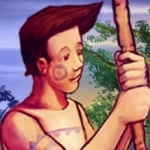
Virtual Villagers 4: The Tree of Life for iPad
Games and Entertainment
App
Villagers: The Tree of Life is the fourth chapter in the award-winning Virtual Villagers series from...
DaveySmithy (107 KP) rated The Dead Zone (1983) in Movies
Dec 3, 2024
A Chilling and Thoughtful Thriller
David Cronenberg’s The Dead Zone (1983) is a film that quietly lingers with you long after the credits roll. Adapted from Stephen King’s novel, it’s a rare blend of psychological horror, heartfelt drama, and supernatural thriller that doesn’t rely on cheap scares to grip its audience. Instead, it uses its haunting premise, a strong central performance by Christopher Walken, and Cronenberg’s understated direction to craft a deeply unsettling exploration of fate, morality, and the burden of knowing the future.
The story follows Johnny Smith (Walken), an ordinary schoolteacher whose life is upended when a car accident leaves him in a coma for five years. When he awakens, he discovers he has gained the ability to see people’s pasts and futures through physical contact—a gift that feels more like a curse. What begins as an attempt to understand and use this newfound power for good spirals into a dark moral dilemma when Johnny foresees a catastrophic future involving a rising politician, Greg Stillson (Martin Sheen).
Christopher Walken is the emotional core of the film, delivering one of his most human and vulnerable performances. He masterfully conveys Johnny’s pain, loneliness, and reluctant heroism, making his character deeply sympathetic. Walken’s portrayal grounds the supernatural elements of the story, ensuring they never feel far-fetched. Martin Sheen is equally compelling as the menacing and unhinged Stillson, a character whose ambition and ruthlessness are frighteningly plausible.
Cronenberg, known for his visceral body horror, takes a restrained approach here, focusing on mood and atmosphere over gore. This subtlety works to the film’s advantage, allowing the tension to simmer until its gripping climax. The muted color palette and moody score by Michael Kamen add to the sense of dread, perfectly capturing the eerie small-town setting.
However, The Dead Zone isn’t without its flaws. The pacing occasionally drags, and some of the supporting characters feel underdeveloped. Additionally, the episodic structure—though true to the novel—can make the narrative feel uneven.
Despite these minor issues, The Dead Zone is an intelligent and emotionally resonant thriller that explores heavy themes with nuance. It may not be as flashy as other Stephen King adaptations, but its quiet power and moral complexity make it a standout. A solid 8/10.
The story follows Johnny Smith (Walken), an ordinary schoolteacher whose life is upended when a car accident leaves him in a coma for five years. When he awakens, he discovers he has gained the ability to see people’s pasts and futures through physical contact—a gift that feels more like a curse. What begins as an attempt to understand and use this newfound power for good spirals into a dark moral dilemma when Johnny foresees a catastrophic future involving a rising politician, Greg Stillson (Martin Sheen).
Christopher Walken is the emotional core of the film, delivering one of his most human and vulnerable performances. He masterfully conveys Johnny’s pain, loneliness, and reluctant heroism, making his character deeply sympathetic. Walken’s portrayal grounds the supernatural elements of the story, ensuring they never feel far-fetched. Martin Sheen is equally compelling as the menacing and unhinged Stillson, a character whose ambition and ruthlessness are frighteningly plausible.
Cronenberg, known for his visceral body horror, takes a restrained approach here, focusing on mood and atmosphere over gore. This subtlety works to the film’s advantage, allowing the tension to simmer until its gripping climax. The muted color palette and moody score by Michael Kamen add to the sense of dread, perfectly capturing the eerie small-town setting.
However, The Dead Zone isn’t without its flaws. The pacing occasionally drags, and some of the supporting characters feel underdeveloped. Additionally, the episodic structure—though true to the novel—can make the narrative feel uneven.
Despite these minor issues, The Dead Zone is an intelligent and emotionally resonant thriller that explores heavy themes with nuance. It may not be as flashy as other Stephen King adaptations, but its quiet power and moral complexity make it a standout. A solid 8/10.
Merissa (13600 KP) rated Warrior Hearts Academy: Dragon Lost in Books
May 16, 2025
WARRIOR HEARTS ACADEMY: DRAGON LOST is the first book in the Dragons trilogy, but book 7 in the whole Warrior Hearts Academy series. You'll need to hold onto your hat as this book is BUSY.
This one starts after the Centaur trilogy, which I haven't read, so there were some parts that I didn't fully get. What I do know is that Bree was a centaur who was changed into something else by Isobel and told she was going to save the Realms. Hint - not true! Bree has grown up with her childhood friends and doesn't want to believe anything bad about them. This is to her detriment as they prove, on more than one occasion, that they are quite happy embracing their dark side. Bree has multiple beings inside her. A Gryphon, Caliel, is the most vocal, but there is also an equine and something big and cold. (You don't know for sure yet what it is.) So, that's Bree.
Then you have Razir, the black and purple Dragon, who has his own storyline going on, as well as Tez, who grew up as a human but is also something else. Tez's story also follows his own path, without really connecting with Bree or Razir. It is told from multiple perspectives, with their own stories being told. This meant I had to slow down my reading to make sure I didn't miss anything. Not that that's a bad thing. I'm just saying.
I felt this book was more about setting the groundwork for their story. There is all the backstory for Bree that we absolutely need, as well as Tez, and figuring out how they all fit together with Razir. It is extremely fast-paced with lots of differing stories to keep track of. I'm really looking forward to seeing how it all joins together (hopefully) in the next book.
It does end on one helluva cliffhanger, so consider yourself warned.
A great start to the Dragon trilogy and definitely recommended by me.
** Same worded review will appear elsewhere. **
* A copy of this book was provided to me with no requirements for a review. I voluntarily read this book; the comments here are my honest opinion. *
Merissa
Archaeolibrarian - I Dig Good Books!
May 16, 2025
This one starts after the Centaur trilogy, which I haven't read, so there were some parts that I didn't fully get. What I do know is that Bree was a centaur who was changed into something else by Isobel and told she was going to save the Realms. Hint - not true! Bree has grown up with her childhood friends and doesn't want to believe anything bad about them. This is to her detriment as they prove, on more than one occasion, that they are quite happy embracing their dark side. Bree has multiple beings inside her. A Gryphon, Caliel, is the most vocal, but there is also an equine and something big and cold. (You don't know for sure yet what it is.) So, that's Bree.
Then you have Razir, the black and purple Dragon, who has his own storyline going on, as well as Tez, who grew up as a human but is also something else. Tez's story also follows his own path, without really connecting with Bree or Razir. It is told from multiple perspectives, with their own stories being told. This meant I had to slow down my reading to make sure I didn't miss anything. Not that that's a bad thing. I'm just saying.
I felt this book was more about setting the groundwork for their story. There is all the backstory for Bree that we absolutely need, as well as Tez, and figuring out how they all fit together with Razir. It is extremely fast-paced with lots of differing stories to keep track of. I'm really looking forward to seeing how it all joins together (hopefully) in the next book.
It does end on one helluva cliffhanger, so consider yourself warned.
A great start to the Dragon trilogy and definitely recommended by me.
** Same worded review will appear elsewhere. **
* A copy of this book was provided to me with no requirements for a review. I voluntarily read this book; the comments here are my honest opinion. *
Merissa
Archaeolibrarian - I Dig Good Books!
May 16, 2025
Lottie disney bookworm (1056 KP) rated Mirror, Mirror in Books
Aug 16, 2019
Review by Disney Bookworm
Contains spoilers, click to show
If I’m honest I initially thought the tagline to this Snow White twisted tale novel was a massive plot spoiler but, when you are 300 pages into a book and no-one has eaten a poisoned apple, it may be the ideal opportunity to admit you were wrong. This book is not that simple!
Mirror, Mirror explores the traditional Grimm fairy tale of Snow White through the eyes of the two main characters: the Evil Queen and Snow White herself. The reader is completely under the control of these two women: finding themselves with no choice but to witness the familiar story from their perspective.
Jen Calonita’s novel is also heavily built on story telling through flashbacks. In my opinion, this is a genius idea as it provides an undeniable depth to her characters. Let’s be honest, everyone knows the story of Snow White but not everyone knows the story before Snow White and it is here where the twisted tale evolves.
Through these flashbacks we meet Katherine and Ingrid: two sisters whom have lost their mother and are being raised by their neglectful, sometimes violent, father. As a result of their upbringing, Ingrid, the elder sister, has adopted a motherly role towards her younger sister Katherine and strives to protect the innocent girl at all times. They leave home, finding work on a farm where Katherine finds her passion within the apple orchard, cultivating a new variety of apple which will later attract the attention of the King.
Ingrid however, always wants more than what she has. Older and more aware of the hardship life can bring, Ingrid is not as sweet and innocent as her sister: people do not dote on Ingrid as they do Katherine and eventually Ingrid finds that she cannot settle for a simple life- instead opting for a job in a small shop known for its association with dark magic and the home of a certain mirror.
You may have guessed by now that Ingrid is, in fact, the Evil Queen and her sister Katherine is Snow White’s mother! I know what you are thinking, I have just described how protective Ingrid was of the future Queen: surely she wouldn’t “off” her own sister and try to collect her niece’s heart in a box?
This is where the complexity of Ingrid’s character really shines through and where, (if hats suited me) I will take my hat off to Jen Calonita. Mirror Mirror takes you on a journey with Ingrid. You experience her love for her sister first-hand as well as her frustration with her sheltered life but later you also witness her lust for power and how easily Ingrid’s choices lead her down the wrong path.
I also believe that Ingrid is truly scarred by her past. She sneers upon her sister’s kindness and villainises Katherine for letting a man, and later her baby, come between them. Ingrid views herself as wiser and more intelligent than her little sister: believing that she would certainly rule the Kingdom more efficiently and not stopping until this becomes a reality.
Despite being a formidable woman, Ingrid is not devoid of vulnerabilities and, as the story progresses, the readers will witness Ingrid’s ghosts and note how one in particular never leaves her until the very end.
Of course, Ingrid’s enabler is the magic mirror. Calonita paints a picture of a mirror identical to the one we remember from the Disney 1938 classic animated film with a haunting mask dominating and manipulating The Evil Queen with every chance it gets.
The mirror creates an obsession and dependence within Ingrid that is chillingly portrayed. It is undoubtedly the real villain of the story: demanding blood from the start and weakening Ingrid until she cleaves to its will. However, we all know who is standing between the mirror and its plans for domination and undisputed power: the princess Snow White.
In the past, I have made no secret of the fact that Snow is my least favourite Disney princess. Her voice in the film grated on me and I just genuinely found her irritating. Thankfully Calonita’s Snow White is more akin to the ‘Once Upon A Time’ interpretation and so much easier to form a relationship with as a reader.
While fulfilling our expectations of being kind, innocent and prone to falling in love with conveniently handsome Princes: Mirror Mirror’s Snow White is bolder than we are used to and, as her story progresses, becomes more confident in herself as the heir to the kingdom. Her priorities are more political in nature, with a strong focus on rebuilding her kingdom and her bravery shines through almost from the very beginning. Snow does encounter challenges and dark thoughts as any person does but earns her Disney princess badge by helping true love to save the day!
Similarly, the seven dwarves are not as one-dimensional as the classic movie. They assist the Princess of course and shelter her in the forest but they also seem more street-wise (or should that be forest-wise?), squirreling away diamonds for bartering and mustering armies for Snow’s cause. There isn’t too much focus on the seven men in Mirror Mirror but I don’t think that the book is necessarily missing this. I think the characters are so well-known that too much character development would stray away from the main plot.
Mirror, Mirror is a modern adaptation of the familiar fairytale: centring itself around two very strong women in their own right but polar opposites in terms of their characters and choices in life.
The novel makes several nods to the iconic images formed in 1938 by Walt Disney such as the apple, the glass coffin and, of course, the seven dwarves. However, the recurring theme of choosing your own story and the complex backgrounds to her characters cause Jen Calonita’s novel to stand out on its own.
It may not have been the traditional “happy ever after” but this adaptation of Snow White was, in my opinion, the “fairest of them all”.
Written by The Disney Bookworm:
https://disneybookworm.home.blog
Mirror, Mirror explores the traditional Grimm fairy tale of Snow White through the eyes of the two main characters: the Evil Queen and Snow White herself. The reader is completely under the control of these two women: finding themselves with no choice but to witness the familiar story from their perspective.
Jen Calonita’s novel is also heavily built on story telling through flashbacks. In my opinion, this is a genius idea as it provides an undeniable depth to her characters. Let’s be honest, everyone knows the story of Snow White but not everyone knows the story before Snow White and it is here where the twisted tale evolves.
Through these flashbacks we meet Katherine and Ingrid: two sisters whom have lost their mother and are being raised by their neglectful, sometimes violent, father. As a result of their upbringing, Ingrid, the elder sister, has adopted a motherly role towards her younger sister Katherine and strives to protect the innocent girl at all times. They leave home, finding work on a farm where Katherine finds her passion within the apple orchard, cultivating a new variety of apple which will later attract the attention of the King.
Ingrid however, always wants more than what she has. Older and more aware of the hardship life can bring, Ingrid is not as sweet and innocent as her sister: people do not dote on Ingrid as they do Katherine and eventually Ingrid finds that she cannot settle for a simple life- instead opting for a job in a small shop known for its association with dark magic and the home of a certain mirror.
You may have guessed by now that Ingrid is, in fact, the Evil Queen and her sister Katherine is Snow White’s mother! I know what you are thinking, I have just described how protective Ingrid was of the future Queen: surely she wouldn’t “off” her own sister and try to collect her niece’s heart in a box?
This is where the complexity of Ingrid’s character really shines through and where, (if hats suited me) I will take my hat off to Jen Calonita. Mirror Mirror takes you on a journey with Ingrid. You experience her love for her sister first-hand as well as her frustration with her sheltered life but later you also witness her lust for power and how easily Ingrid’s choices lead her down the wrong path.
I also believe that Ingrid is truly scarred by her past. She sneers upon her sister’s kindness and villainises Katherine for letting a man, and later her baby, come between them. Ingrid views herself as wiser and more intelligent than her little sister: believing that she would certainly rule the Kingdom more efficiently and not stopping until this becomes a reality.
Despite being a formidable woman, Ingrid is not devoid of vulnerabilities and, as the story progresses, the readers will witness Ingrid’s ghosts and note how one in particular never leaves her until the very end.
Of course, Ingrid’s enabler is the magic mirror. Calonita paints a picture of a mirror identical to the one we remember from the Disney 1938 classic animated film with a haunting mask dominating and manipulating The Evil Queen with every chance it gets.
The mirror creates an obsession and dependence within Ingrid that is chillingly portrayed. It is undoubtedly the real villain of the story: demanding blood from the start and weakening Ingrid until she cleaves to its will. However, we all know who is standing between the mirror and its plans for domination and undisputed power: the princess Snow White.
In the past, I have made no secret of the fact that Snow is my least favourite Disney princess. Her voice in the film grated on me and I just genuinely found her irritating. Thankfully Calonita’s Snow White is more akin to the ‘Once Upon A Time’ interpretation and so much easier to form a relationship with as a reader.
While fulfilling our expectations of being kind, innocent and prone to falling in love with conveniently handsome Princes: Mirror Mirror’s Snow White is bolder than we are used to and, as her story progresses, becomes more confident in herself as the heir to the kingdom. Her priorities are more political in nature, with a strong focus on rebuilding her kingdom and her bravery shines through almost from the very beginning. Snow does encounter challenges and dark thoughts as any person does but earns her Disney princess badge by helping true love to save the day!
Similarly, the seven dwarves are not as one-dimensional as the classic movie. They assist the Princess of course and shelter her in the forest but they also seem more street-wise (or should that be forest-wise?), squirreling away diamonds for bartering and mustering armies for Snow’s cause. There isn’t too much focus on the seven men in Mirror Mirror but I don’t think that the book is necessarily missing this. I think the characters are so well-known that too much character development would stray away from the main plot.
Mirror, Mirror is a modern adaptation of the familiar fairytale: centring itself around two very strong women in their own right but polar opposites in terms of their characters and choices in life.
The novel makes several nods to the iconic images formed in 1938 by Walt Disney such as the apple, the glass coffin and, of course, the seven dwarves. However, the recurring theme of choosing your own story and the complex backgrounds to her characters cause Jen Calonita’s novel to stand out on its own.
It may not have been the traditional “happy ever after” but this adaptation of Snow White was, in my opinion, the “fairest of them all”.
Written by The Disney Bookworm:
https://disneybookworm.home.blog
Gareth von Kallenbach (980 KP) rated Avatar (2009) in Movies
Aug 8, 2019
With a budget reported to be around $400 million dollars and a four year production cycle, “Avatar” by James Cameron is poised to usher in a new age in digital fx and 3d.
The film is set in 2154 and involves a disabled vet named Jake (Sam Worthington), who is sent to the distant moon of Pandora following the death of his brother.
It is learned that Pandora possesses a highly valuable resource that sells on the resource ravaged earth for $200 million a kilo and, which naturally sets off a frenzy of mining on the moon.
With the cultivation of the resource at a premium a facility has been established to ensure a constant mining operation and protect those on the base from the hostile wildlife that is everywhere.
While the wildlife on Pandora is a big issue, it pales in comparison to the issues poised by the native Na’vi who are a blue-skinned race who live in the forests of the moon and are in harmony with the nature of the planet which have caused them to hamper the mining efforts of the humans.
Anxious to keep the mining operations going, and limit the use of brute force to avoid any p.r. issues, a program known as “Avatar” is put into motion which allows select individuals to pilot a surrogate made from Na’vi and human D.N.A. in an effort to get the Na’vi to move and end their opposition to the mining.
It is hoped that the pilots will in time find a way to force the cooperation of the Na’vi after spending time amongst them.
Jake is thrilled with the program as once his remote link is established, he is free to run and jump again and in time finds himself absorbed by the Na’vi who wish to show him their ways as a test of his worthiness after he is separated from his fellow humans.
At this point Jake leads a double life as his surrogate learns what it is to be Na’vi and when the surrogate is asleep, Jake unhooks himself from his control bed, and is back on the base with his fellow humans. Jake is approached by Colonel Quaritch (Stephen Lang), who tasks the Marine to obtain tactical data on the Na’vi should his forces be called into action to force their cooperation. Jake is promised a costly procedure in return which would allow him to regain the use of his legs and live a life outside of his wheelchair.
As time passes, Jake grows closer to his Na’vi mentor Neytire (Zoe Saldana), who aside from being the daughter of the chief is a skilled hunter for her people. At this point Jake begins to question the motives and methods of his people and sees the exploitation and possible massacre of the Na’vi as something he can no longer accept. Jake puts a plan in motion to protect his human and Na’vi friends and what follows is an epic confrontation that is awash in visual splendor and action as James Cameron once again pushes the boundaries of technology.
Some may cite the story as resembling “Dances with Wolves’; and other films that deal with the exploitation of the native races, but the true magic of the film is that it is not limited to the lavish visuals but is instead powered by the compelling characters.
The 3d fx shine as Cameron has created another world with a thriving ecosystem that is as much a character in the film as the flesh and blood and digital creations that power the story.
The film has good supporting work from Sigourney Weaver, and Michelle Rodriquez as well as the fine ensemble cast. The amazing blend of story, digital splendor, and characters all combine to make “Avatar” a truly amazing visual film with a strong message of love, hope, and unity. James Cameron has once again proved that he is one of the true masters of cinema and has crafted a magical experience that enchants and informs.
The film is set in 2154 and involves a disabled vet named Jake (Sam Worthington), who is sent to the distant moon of Pandora following the death of his brother.
It is learned that Pandora possesses a highly valuable resource that sells on the resource ravaged earth for $200 million a kilo and, which naturally sets off a frenzy of mining on the moon.
With the cultivation of the resource at a premium a facility has been established to ensure a constant mining operation and protect those on the base from the hostile wildlife that is everywhere.
While the wildlife on Pandora is a big issue, it pales in comparison to the issues poised by the native Na’vi who are a blue-skinned race who live in the forests of the moon and are in harmony with the nature of the planet which have caused them to hamper the mining efforts of the humans.
Anxious to keep the mining operations going, and limit the use of brute force to avoid any p.r. issues, a program known as “Avatar” is put into motion which allows select individuals to pilot a surrogate made from Na’vi and human D.N.A. in an effort to get the Na’vi to move and end their opposition to the mining.
It is hoped that the pilots will in time find a way to force the cooperation of the Na’vi after spending time amongst them.
Jake is thrilled with the program as once his remote link is established, he is free to run and jump again and in time finds himself absorbed by the Na’vi who wish to show him their ways as a test of his worthiness after he is separated from his fellow humans.
At this point Jake leads a double life as his surrogate learns what it is to be Na’vi and when the surrogate is asleep, Jake unhooks himself from his control bed, and is back on the base with his fellow humans. Jake is approached by Colonel Quaritch (Stephen Lang), who tasks the Marine to obtain tactical data on the Na’vi should his forces be called into action to force their cooperation. Jake is promised a costly procedure in return which would allow him to regain the use of his legs and live a life outside of his wheelchair.
As time passes, Jake grows closer to his Na’vi mentor Neytire (Zoe Saldana), who aside from being the daughter of the chief is a skilled hunter for her people. At this point Jake begins to question the motives and methods of his people and sees the exploitation and possible massacre of the Na’vi as something he can no longer accept. Jake puts a plan in motion to protect his human and Na’vi friends and what follows is an epic confrontation that is awash in visual splendor and action as James Cameron once again pushes the boundaries of technology.
Some may cite the story as resembling “Dances with Wolves’; and other films that deal with the exploitation of the native races, but the true magic of the film is that it is not limited to the lavish visuals but is instead powered by the compelling characters.
The 3d fx shine as Cameron has created another world with a thriving ecosystem that is as much a character in the film as the flesh and blood and digital creations that power the story.
The film has good supporting work from Sigourney Weaver, and Michelle Rodriquez as well as the fine ensemble cast. The amazing blend of story, digital splendor, and characters all combine to make “Avatar” a truly amazing visual film with a strong message of love, hope, and unity. James Cameron has once again proved that he is one of the true masters of cinema and has crafted a magical experience that enchants and informs.
